Table of Contents
Introduction
According to Identity and Access Management Statistics, Identity and Access Management (IAM) is vital for cybersecurity, ensuring control over who can access a company’s digital assets. IAM confirms user identities, authorizes or restricts access, and oversees user accounts throughout their existence. It has gained significance due to rising digital complexities and security concerns, used across industries like finance, healthcare, and tech.
Cloud-based solutions and biometric authentication are increasingly common. IAM adheres to data protection rules and holds promise in the future with biometrics and AI-based access controls, safeguarding digital assets effectively.
Editor’s Choice
- The global Identity and Access Management (IAM) market is experiencing robust growth at a CAGR of 13.7%, with a clear upward trajectory in revenue over the coming years.
- In 2022, the market generated approximately USD 14.7 billion in revenue.
- Provisioning, responsible for managing user access and privileges, accounted for USD 4.3 billion in revenue, while Multifactor Authentication, a vital aspect of enhancing security through multiple authentication methods, contributed USD 3.1 billion.
- As of the latest data, the majority of IAM solutions are deployed on-premise, comprising a substantial market share of 58%.
- Among the main ways cybercriminals infiltrate organizations, stolen credentials, and phishing stand out as two of the top three methods.
- Integration compatibility stands out as a top priority, with a substantial 72% of organizations giving it paramount importance.
- In 2022, the most widely adopted tool by companies worldwide was Security Information and Event Management (SIEM).
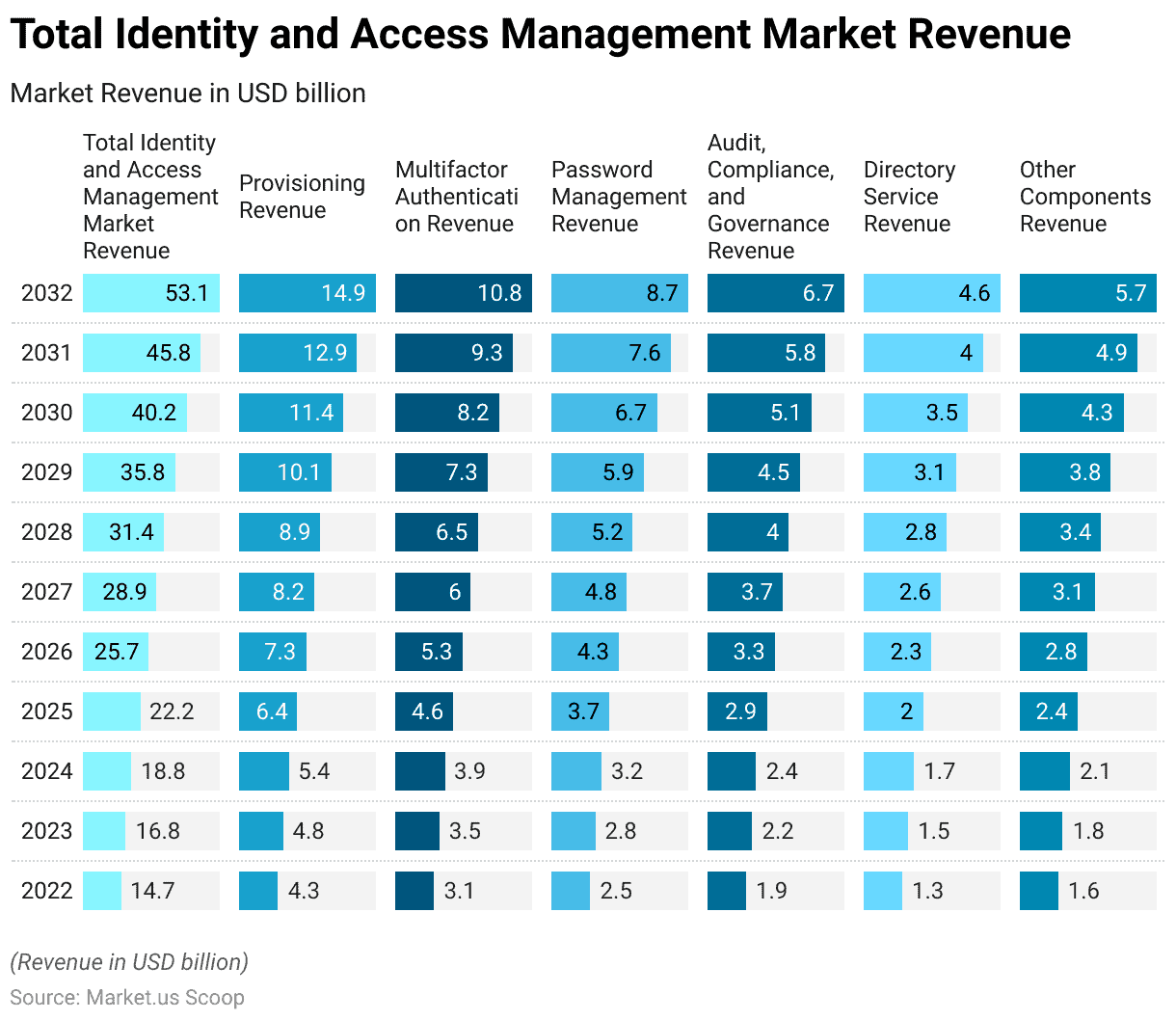
Global Identity and Access Management Market Overview
Global Identity and Access Management Market Size
- The global Identity and Access Management (IAM) market is experiencing robust growth at a CAGR of 13.7%, with a clear upward trajectory in revenue over the coming years.
- In 2022, the market generated approximately USD 14.7 billion in revenue, marking the starting point of this upward trend.
- The subsequent years are projected to witness steady expansion, with revenues reaching USD 16.8 billion in 2023 and USD 18.8 billion in 2024.
- The growth trend remains strong, reaching USD 45.8 billion in 2031 and USD 53.1 billion in 2032.
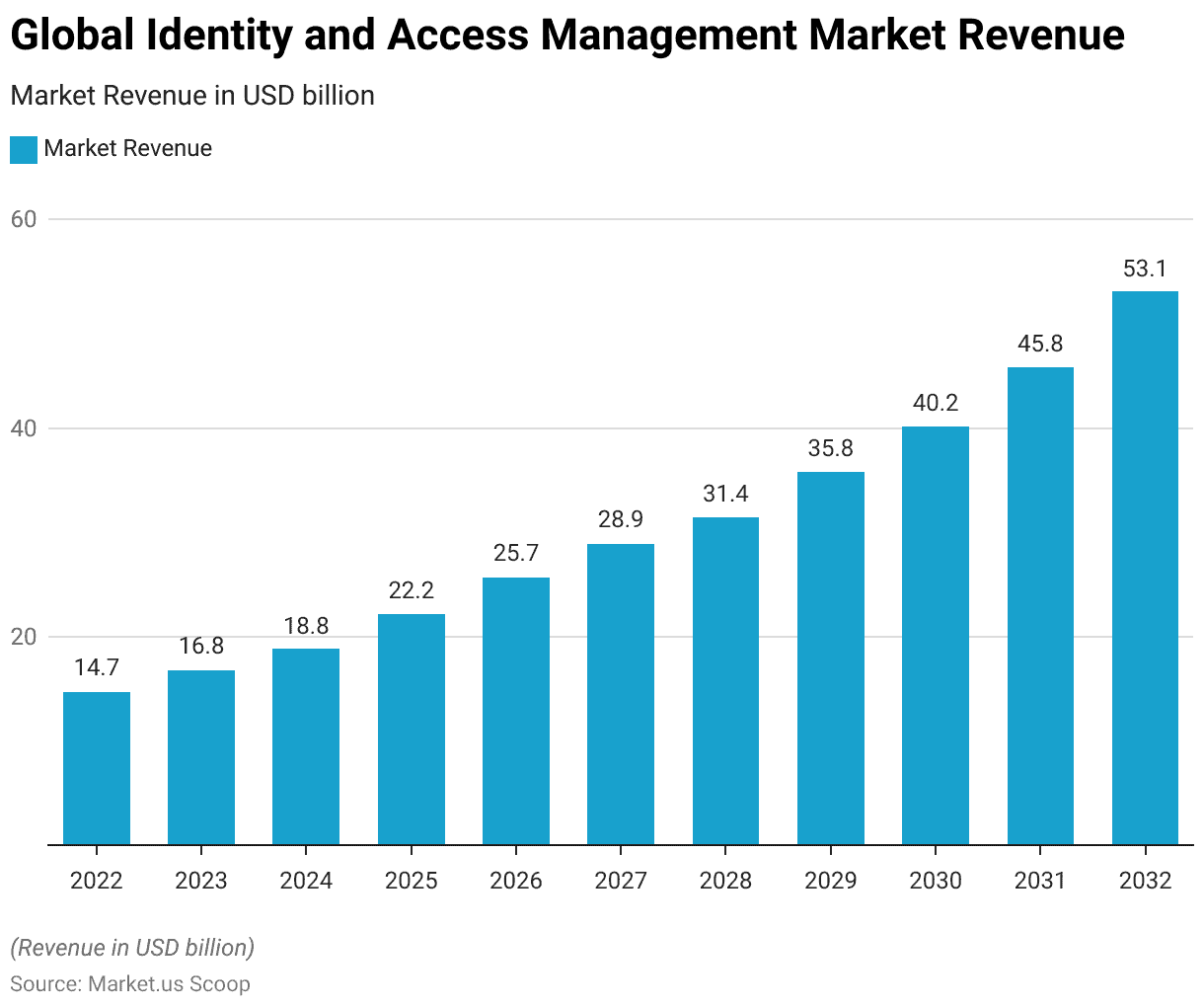
Identity and Access Management Market Share – By Component
- The Global Identity and Access Management (IAM) market exhibits a comprehensive breakdown by component, revealing a clear picture of its revenue distribution over the years.
- In 2022, the IAM market initiated its journey with a total revenue of USD 14.7 billion. Within this landscape, several critical components played distinct roles.
- Provisioning, responsible for managing user access and privileges, accounted for USD 4.3 billion in revenue, while Multifactor Authentication, a vital aspect of enhancing security through multiple authentication methods, contributed USD 3.1 billion.
- Password Management, essential for safeguarding sensitive information, generated USD 2.5 billion in revenue.
- Audit, Compliance, and Governance, crucial for regulatory adherence and security control, added USD 1.9 billion, while Directory Service, responsible for organizing user data and resources, accounted for USD 1.3 billion.
- Other Components, encompassing various IAM-related services and solutions, contributed USD 1.6 billion to the market.
- As we progress through the forecasted years, the IAM market is set to experience significant growth, culminating in a substantial revenue of USD 53.1 billion by 2032.
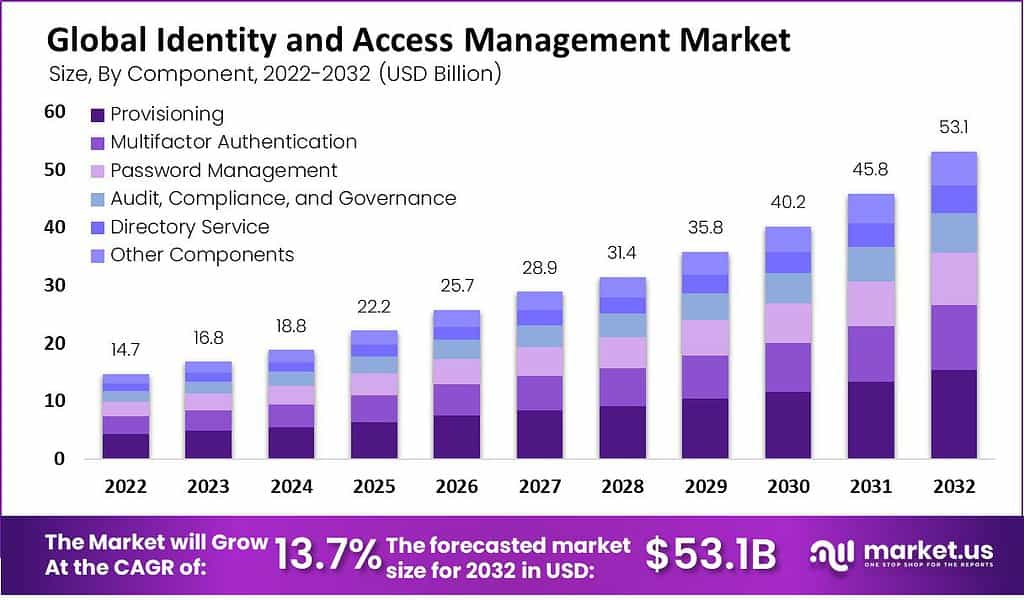
Global Identity and Access Management Market Share – By Deployment
- The Global Identity and Access Management (IAM) market exhibits a significant division in terms of deployment modes.
- As of the latest data, the majority of IAM solutions are deployed on-premise, comprising a substantial market share of 58%.
- This indicates a prevalent preference for organizations to maintain IAM systems within their infrastructure, often driven by factors such as security, control, and legacy systems integration.
- In contrast, the cloud-based deployment mode has steadily gained traction, accounting for 42% of the market share.
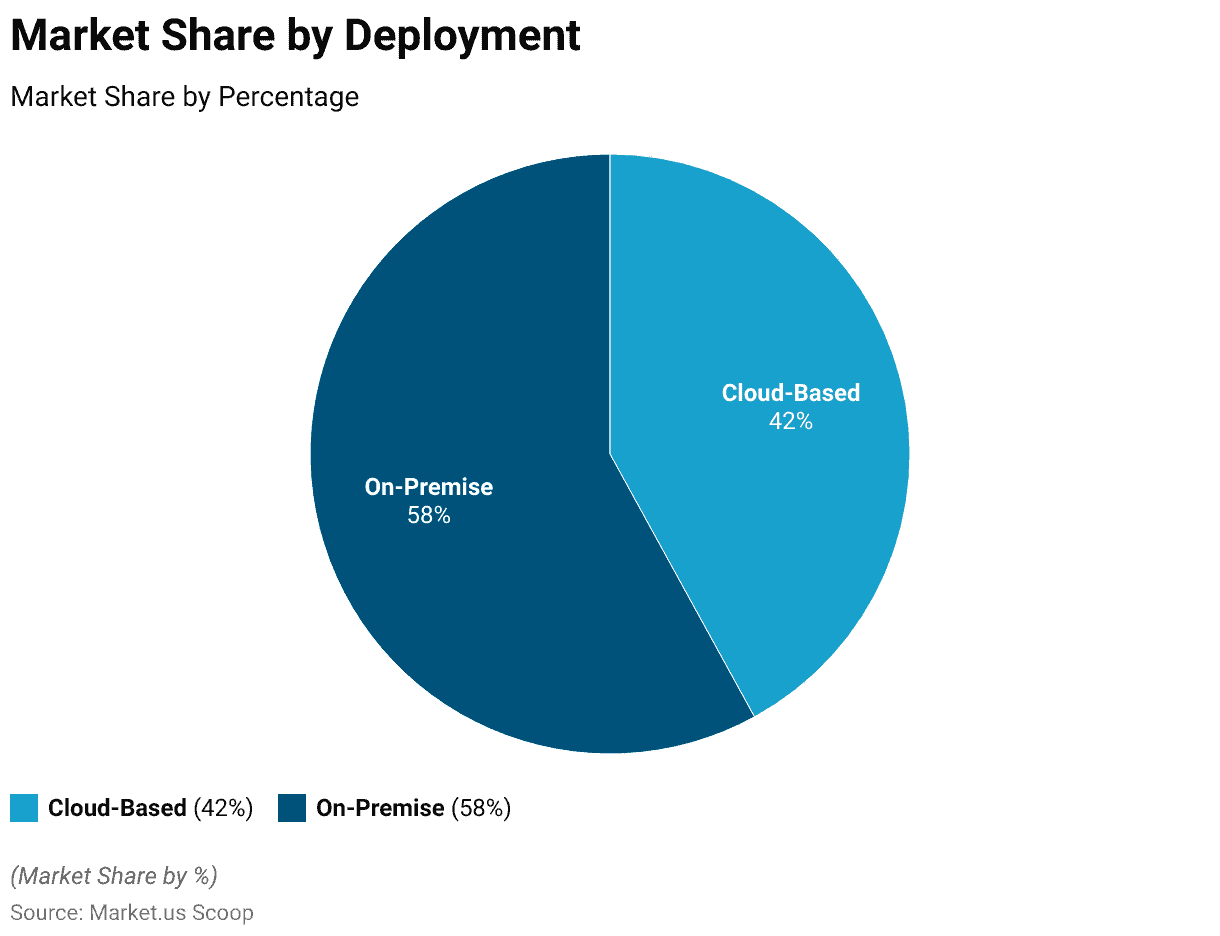
Security Incidents Driving the Demand for IAM
- Among the main ways cybercriminals infiltrate organizations, stolen credentials, and phishing stand out as two of the top three methods.
- Notably, in 74% of all security breaches, human actions play a significant role. This involvement includes misusing privileges, employing stolen login information, employing social engineering tactics, or making errors, and it’s worth noting that three out of these four approaches are directly tied to user identities.
- This trend is expected to persist, with a continued surge in password-related attacks. Notably, this year has witnessed a more than tenfold rise in attempted password attacks compared to the same period last year.
- Additionally, according to additional research by Crowdstrike, there has been a 112% year-on-year surge in advertisements for access-broker services in the criminal underground, such as the dark web.
Factors Organizations Are Evaluating an Identity and Access Management (IAM) Solution
- Organizations are meticulously evaluating Identity and Access Management (IAM) solutions, considering several critical factors.
- Integration compatibility stands out as a top priority, with a substantial 72% of organizations giving it paramount importance.
- Ensuring a seamless integration of IAM systems into their existing infrastructure is crucial. The end-user experience follows closely, with 62% of organizations emphasizing the need for user-friendly and efficient IAM solutions.
- Additionally, the product’s performance and effectiveness weigh significantly, with 61% of organizations scrutinizing IAM solutions to ensure they meet the high standards required for safeguarding digital assets and providing robust access control.
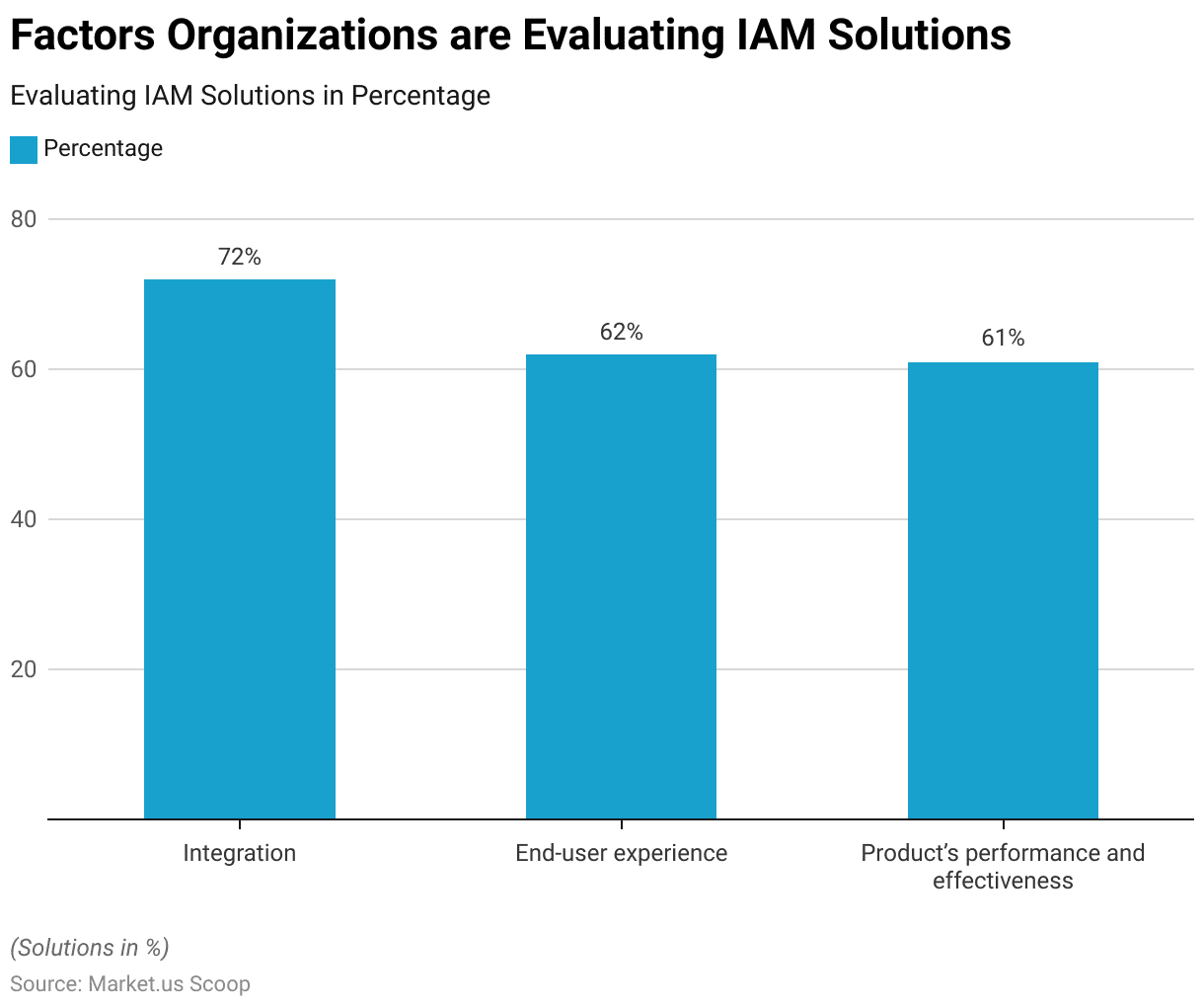
Main Tools Integrated Within Companies’ IAM System
- In the realm of Identity and Access Management (IAM) systems worldwide in 2022, several key tools were integrated within companies to bolster security and access control.
- Leading the pack, Security Information and Event Management (SIEM) was the most widely integrated tool, with an impressive 84% adoption rate.
- This tool plays a vital role in proactively detecting and responding to security incidents.
- Endpoint Detection and Response (EDR) followed closely, integrated by 64% of organizations, enhancing their ability to monitor and secure endpoints.
- Orchestration and Automation (SOAR) tools were also prevalent, with 56% integration, with even more organizations planning to adopt them in the next 12-18 months, highlighting their importance.
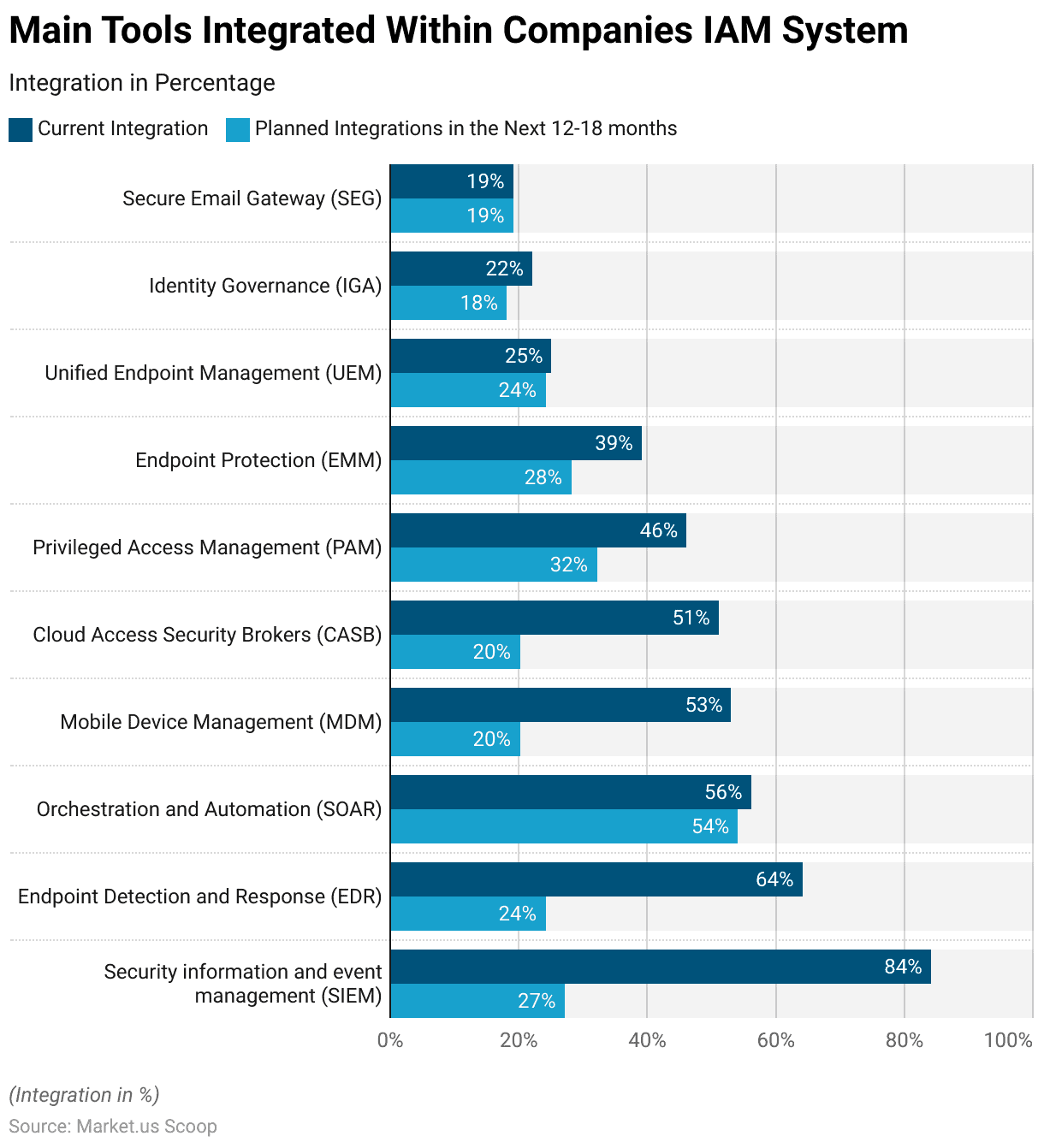
Cybersecurity and IAM Spending
- Cybersecurity spending has exhibited consistent growth over the past six years.
- In 2015, global expenditure on cybersecurity stood at USD 75.6 billion, marking the beginning of this upward trajectory.
- Notably, in 2019, there was a substantial leap in spending, reaching USD 120 billion, indicative of the growing recognition of the importance of cybersecurity.
- This commitment to security persisted in 2020, with global cybersecurity spending reaching USD 124 billion, underscoring the ongoing dedication to safeguarding digital assets and data in an increasingly connected world.
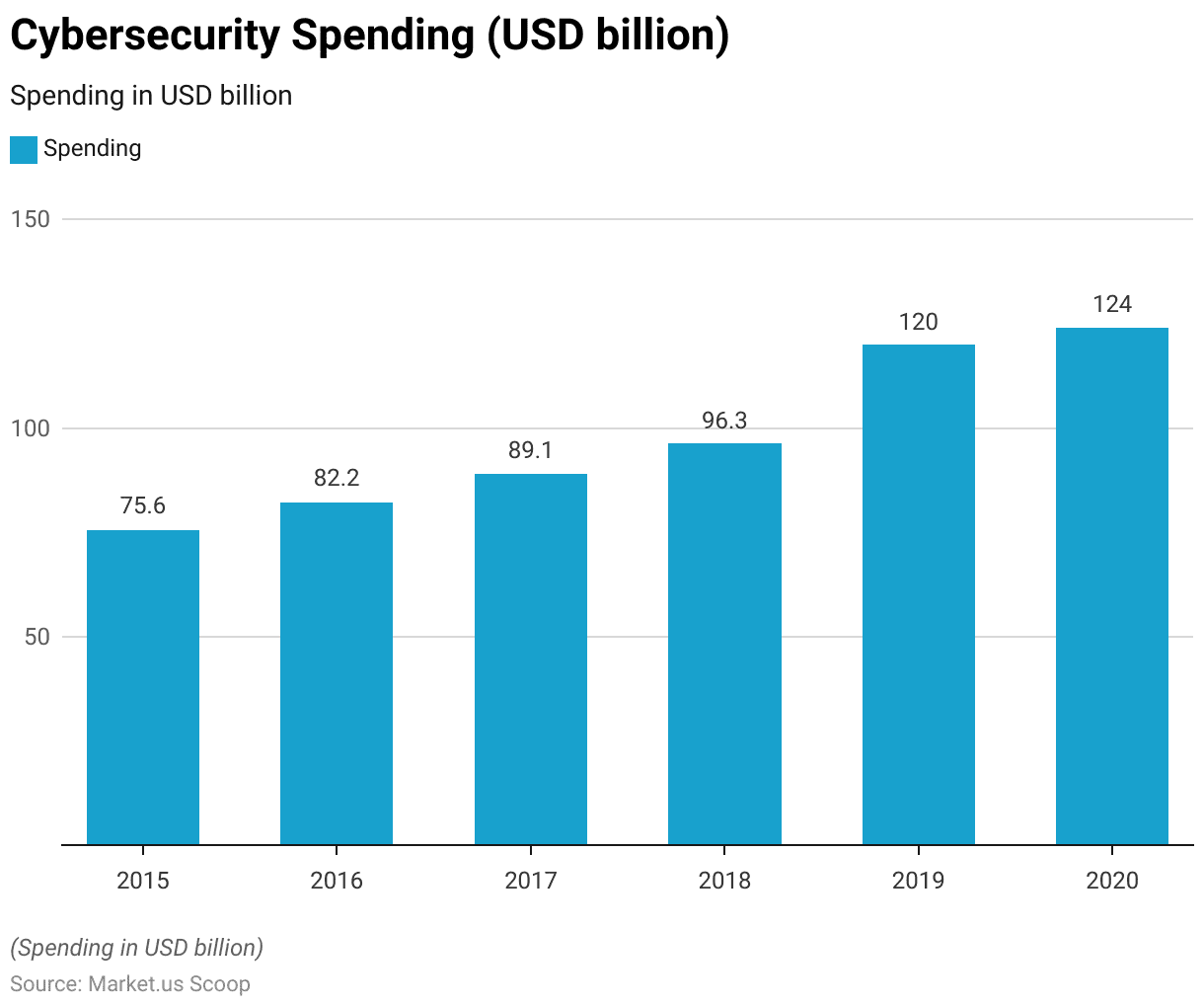
Discuss your needs with our analyst
Please share your requirements with more details so our analyst can check if they can solve your problem(s)



